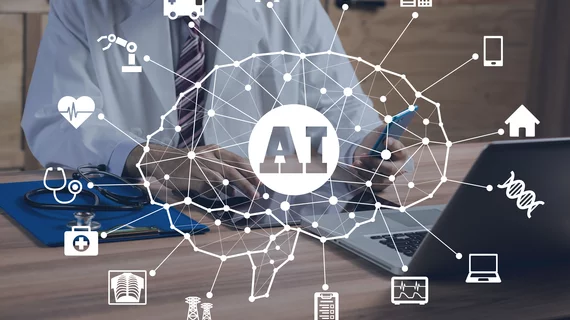AI boosts accuracy of DBT, slashes radiologists’ reading times
Utilizing an AI system for digital breast tomosynthesis (DBT) can improve radiologists’ accuracy while dramatically reducing reading times, according to a new study published in Radiology: Artificial Intelligence.
For the study, the researchers used a deep learning system developed by a commercial vendor trained to identify suspicious findings in DBT images. Compared to 24 radiologists required to read 260 exams, the AI platform analyzed the same number of exams in nearly half the time, all while improving sensitivity and specificity.
“We know that DBT imaging increases cancer detection and lowers recall rate when added to 2-D mammography and even further improvement in these key metrics is clinically very important,” said lead author Emily F. Conant, MD, in a prepared statement. “And, since adding DBT to the 2-D mammogram approximately doubles radiologist reading time, the concurrent use of AI with DBT increases cancer detection and may bring reading times back to about the time it takes to read DM-alone exams.”
DBT has been proven to improve cancer detection while reducing false-positive recalls when compared to mammography, but, as Conant mentioned, interpreting DBT scans requires radiologists to scroll through more images which can lengthen readings times. Therefore Conant, chief of breast imaging at the Perelman School of Medicine at the University of Pennsylvania, and colleagues tested if AI might improve reading times and the overall accuracy of DBT.
The 24 radiologists included 13 breast subspecialists who were required to read 260 DBT exams (65 cancer cases) both with and without AI. These readings took place in two sessions, four weeks apart.
Overall, when radiologists used AI, accuracy and reading times both improved. Sensitivity increased from 77% to 85%. Specificity increased from 62.7% without AI to 69.6% with the help. Additionally, the recall rate for non-cancers decreased from 38% to 30.9% with AI.
Perhaps most dramatically, average reading time for radiologists decreased from slightly above 64 seconds to 30.4 seconds when using AI.
“Overall, readers were able to increase their sensitivity by 8 percent, lower their recall rate by 7 percent and cut their reading time in half when using AI concurrently while reading DBT cases compared to reading without using AI,” Conant added.
Even the mean area under the receiver operating characteristic curve (AUC) improved when radiologists used AI (0.852) than when they didn’t (0.795).
“The results of this study suggest that both improved efficiency and accuracy could be achieved in clinical practice using an effective AI system,” Conant concluded.

